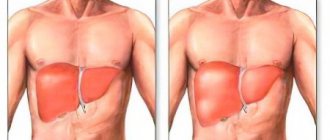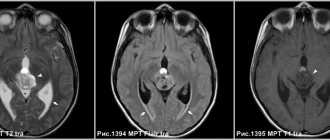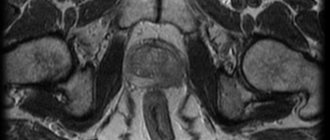Briefly about the disease
A nodule is an area that is different in density or color on ultrasound (ultrasound) from the rest of the thyroid tissue and has clear boundaries.
For a long time, the presence of nodes does not affect the functions of the gland. However, an increase in the size of the nodes leads to compression of tissues, deformation of organs appears, which can be accompanied by discomfort and unpleasant sensations.
Research shows that these formations are the most common lesion of the thyroid gland, they occur in 30-50% of the world's inhabitants, and in older people their presence in humans is almost the norm. Nodes are more common in women over 60 years of age: the likelihood of their occurrence is 6-8 times higher than in men.
There are 2 main types of nodes: benign and malignant. In our region, benign nodes are found in 95% of cases, and the remaining 5% are represented by malignant tumors. According to the morphological picture, benign nodes are colloid nodes, follicular adenomas, cysts and inflammatory processes of the thyroid gland. They can actively produce hormones or remain non-toxic for many years. The picture of the disease largely depends on the patient’s lifestyle, his state of health and other factors.
Forecast
The prognosis for nodular formations depends on the histological form. With a benign form of the cyst, complete recovery is possible. If the gland is functioning fully, patients have no complaints, but it should be observed by an endocrinologist, since cysts can recur. Malignant tumors of the gland in the absence of metastases are cured in 70% of cases. Malignant tumors that give distant metastases and grow into other organs have an unfavorable prognosis.
Causes of nodules in the thyroid gland
- lack of iodine in the diet;
- the effects of ionizing radiation on the body;
- toxic poisoning;
- burdened heredity.
The incidence of nodules is much higher in individuals who have received increased doses of radiation. The problem is also faced by employees of enterprises whose activities involve the use of toxic substances (heavy metals, fuel, varnishes, paints, etc.). The disease is aggravated by constant stress and excessive physical activity.
Mechanism of appearance of nodes
According to the mechanism of appearance, thyroid nodules can be divided into two main groups - tumors and “non-tumors”. Tumor nodes appear due to the occurrence of a mutation in one of the thyroid cells (A, B, or C-type). The cause of mutation is damage to the genetic material of the cell located in its nucleus. This damage can be caused by radiation, exposure to certain chemicals (such as heavy metals). In some cases, such mutations can be inherited. Benign tumors, as they grow, push apart the surrounding thyroid tissue. An enlarged tumor leads to atrophy of the gland tissue due to compression by the tumor tissue. Benign cells do not acquire the ability for infiltrative growth, i.e. penetration between thyroid cells. The main property of malignant tumors is the possibility of infiltrative growth. The tumor can grow not only into the thyroid gland, but also into surrounding organs - the trachea, esophagus, muscles, and blood vessels.
Metastasis occurs by hematogenous and lymphogenous routes. The properties of the tumor directly depend on the type of cell in which the mutation occurred. A cells are the source of follicular adenomas and carcinomas, papillary carcinoma, anaplastic cancer, B cells (Hurthle cells) give rise to Hurthle cell adenomas and carcinomas, and C cells give rise to medullary thyroid carcinoma.
Symptoms of the development of cysts and thyroid nodules
It is almost impossible to diagnose the disease on your own. The nodes develop for a long time without showing themselves in any way. Patients do not feel any changes at all and continue to lead their usual lifestyle. The seals are painless and small in size. They are found during routine examinations or during examinations associated with other abnormalities. Up to a certain point, a person does not experience any pressure or discomfort, and there are no malfunctions in the functioning of the organ.
It is possible to detect the problem during palpation, since the nodes are easily palpable. The formations are perceived as smooth, round formations. They are dense and elastic, but still differ from healthy tissue. A dangerous symptom is the simultaneous enlargement of the lymph nodes, which may indicate malignant degeneration of the cells.
The reason for contacting a specialist is often a visual enlargement of the gland. Patients notice deformities in the neck area and make an appointment with an endocrinologist. Visible changes indicate the impressive size of the node. At this stage, the formations reach a diameter of 3 cm or more.
Typical complaints are:
- feeling of a “lump in the throat”;
- problems with swallowing;
- sore throat;
- pain in the neck and head;
- labored breathing;
- change in voice or complete loss of voice,
- appearance of cough;
- elevated temperature.
Discomfort occurs when anatomical structures close to the organ are compressed. If the autonomous thyroid nodules actively produce hormones, hyperthyroidism develops. In this case, subjective symptoms such as tachycardia, hot flashes, increased excitability or emotional lability are clearly manifested. The clinical picture is accompanied by sensations of palpitations, exophthalmos (bulging eyes), irritation, and aggression.
During the examination, much attention is paid to single nodes. Solitary formations are often malignant. When identifying such pathologies, doctors strive to conduct the most complete diagnosis. The seals are characterized by rapid growth, hard consistency, and are accompanied by changes in the lymphatic system. Numerous nodes develop into a diffuse goiter. Unfortunately, it is impossible to assess the benignity of the pathology or make an accurate prognosis based only on symptoms and external signs.
Signs of degeneration into cancer
Signs of the possible start of a dangerous process are:
- chronic fatigue;
- rapid growth of the tumor;
- weight loss, if you maintain a good appetite and do not change your diet;
- frequent and sudden mood changes.
Due to the peculiarities of the anatomy, in most cases the formation in the right lobe of the thyroid gland undergoes malignant degeneration. On the left, the tumor rarely grows to a size of more than 6 mm and can be treated conservatively.
Cysts: types, diagnosis, surgical removal
Basic methods for diagnosing thyroid nodules and cysts
Each patient who consults an endocrinologist regarding thyroid formations goes through a series of medical tests necessary to make the correct diagnosis. This:
- Examination:
presence of nervousness, fussiness of the patient; - Survey:
data on the possibility of exposure to radiation during life, on concomitant diseases, on diseases in relatives; - Palpation of the thyroid gland
: in this case, nodes can be detected in 3-7% of people who do not have any symptoms; - Ultrasound:
a mandatory examination for thyroid diseases. The sensitivity of ultrasound significantly increases the possibilities of palpation (which most often only allows one to suspect the presence of pathology) and detects nodes up to 1 cm in size; - Fine needle aspiration biopsy (FNA):
considered the main diagnostic method in the evaluation of patients with thyroid nodules; - Blood test for hormone levels:
TSH (thyroid-stimulating hormone), free T3 (triiodothyronine), free T4 (thyroxine); - Determination of the titer of antibodies to thyroid tissue:
AT to TPO (antibodies to thyroid peroxidase); - Scintigraphy:
the method is based on the use of iodine isotopes that accumulate in the tissues of the thyroid gland.
Identification of the problem of compression of nearby organs is carried out using bronchoscopy or laryngoscopy. Additional research methods are also widely used. Doctors have a wide range of radiological techniques in their arsenal.
Diagnostics
The tumor can be felt by the endocrinologist by palpation during the examination. After this, an ultrasound is performed to identify the structure of the formation and clarify the size. Next, a biopsy is needed, which will show the severity of the disease, identify atypical cells, if any, and purulent inclusions (if the tumor has not festered, then it is considered uncomplicated).
During puncture, treatment of a thyroid cyst can be performed simultaneously: the contents are completely removed from it and sclerotherapy is performed by introducing special drugs into the empty cavity. Thanks to this, the growth of the formation stops and the patient’s recovery is accelerated at an early stage.
To get a complete clinical picture, especially if there is a suspicion that the tumor is degenerating, additional studies are needed:
- CT (reveals the structure);
- laryngoscopy (if it is difficult to swallow and the voice has changed);
- angiography (if the doctor suspects that large blood vessels are involved in the process);
- bronchoscopy (for a large tumor that prevents the patient from breathing);
- tests to determine hormonal levels.
However, it is important to understand that it is impossible to predict the “behavior” of a tumor even after a thorough examination.
It often happens that a stable small tumor suddenly begins to grow. Causes may include stress or a viral infection. This is due to the fact that pathology mainly occurs due to hormonal changes, which are influenced by many external factors.
Treatment of benign thyroid nodules
- hormone therapy,
- surgical treatment,
- minimally invasive procedures.
Minimally invasive procedures
- Ethanol sclerotherapy.
For cystic thyroid nodules (the nodule is filled with fluid), the surgeon, under ultrasound control, removes fluid from the node and gradually injects 95% ethyl alcohol (ethanol) into the cyst, which causes the death of the node cells. After 4-5 sessions, the cyst in the thyroid gland can decrease by 90%. - Laser-induced thermotherapy.
Under ultrasound control, a quartz light guide is inserted into the tissue of the thyroid nodule, through which laser radiation is supplied to the node. Under the influence of light energy transmitted by the laser, the node heats up and its cells die. The dead cells are subsequently replaced by scar tissue. - Radiofrequency thermal destruction.
It is used mainly to suppress the activity of large autonomously functioning nodes that cause thyrotoxicosis. Such formations are most often found in elderly patients with severe comorbidities and contraindications to surgical treatment. The technique is as follows. A needle is inserted into the thyroid node, from which conductors equipped with temperature sensors are extended into the tissue of the node. Using a radio frequency generator, a high-frequency electromagnetic field is created on the conductors, which heats the tissue of the node to 105 degrees, which leads to irreversible damage to the cells of the node.
Surgical treatment
As we said earlier, only after FNA of the thyroid gland and obtaining a histological report of the node tissue are the indications for surgery determined.
If histology reveals a “colloid node” (benign formation), and the patient has no complaints, surgery is not indicated for him. At the same time, there are situations in which a “colloid nodule” is also detected during FNA of the thyroid gland, but surgical treatment is recommended for these patients.
This happens in the following cases:
- When the thyroid nodule increases to a large size, and compression of the neck organs appears, accompanied by disturbances in the swallowing process or a feeling of suffocation.
- When the growth of a node leads to deformation of the anterior surface of the neck.
- If the growth of the node is accompanied by an increase in the amount of thyroid hormones and leads to the appearance of thyrotoxicosis.
The extent of surgical intervention depends on the degree of damage to the thyroid gland. This may be the removal of one lobe - hemithyroidectomy in the presence of a single node, or removal of the entire gland - thyroidectomy in the case of multiple nodes.
If FNA followed by histological findings definitely confirms the malignant nature of the nodule (papillary carcinoma, follicular carcinoma, medullary carcinoma, squamous cell carcinoma, anaplastic thyroid carcinoma), the only correct solution would be to remove the thyroid gland completely.
During pregnancy
Often the first ultrasound of the gland is performed during pregnancy and cyst-like formations are detected. If there are no abnormalities in the function of the gland, then there is no threat of miscarriage. The threat exists only in a hypothyroid state. There is also no data on the danger of benign formations for the development of a child if the function of the gland is within normal limits. A pregnant woman can undergo dynamic ultrasound of the gland and even a fine-needle biopsy if necessary, but scintigraphy with iodine isotopes is contraindicated.
If a nodular pathology is detected, the pregnant woman must be sent for examination to endocrinological institutes or dispensaries. Benign formations, including nodular goiter , cyst , adenoma , are not an indication for termination of pregnancy and are not subject to surgical intervention during pregnancy. If a diagnosis of “follicular tumor” is received, surgical treatment is carried out after childbirth.
For cysts with normal gland function, iodine is prescribed (200 mcg/day) and ultrasound monitoring is done every three months. The main goal of conservative treatment is to prevent the growth of the formation or reduce its size. In forms that occur with hypofunction, hormone replacement therapy ( Eutirox , L-thyroxine ) is prescribed. The dose is selected under the control of TSH ( thyroid-stimulating hormone ).
Considering that during pregnancy the need for hormones increases, therefore TSH is monitored once every 3 months and the dose of the drug is adjusted accordingly. A pregnant woman's diet should be complete and contain a sufficient amount of protein (cottage cheese, meat, eggs) and iodine (seafood, fish, tomatoes, beets, seaweed, kiwi, persimmon), given that the need for it during pregnancy is 150-200 mg per day. day.







